By Rick VanSickle
I’ve been tasting the wines from Domaine Queylus since the first barrels were crafted by veteran winemaker Thomas Bachelder in 2009.
It was a curious project, started by a large group of Quebec investors, and no one was quite sure where it was going or if it would even fly in Niagara. The team purchased a house and abandoned vineyard on the far reaches of south Niagara, a bit of a trek and away from the more densely populated Bench wineries. The vineyard didn’t show promise for growing the kind of grapes Queylus was bound and determined to make — Pinot Noir, Chardonnay and Bordeaux variety wines.
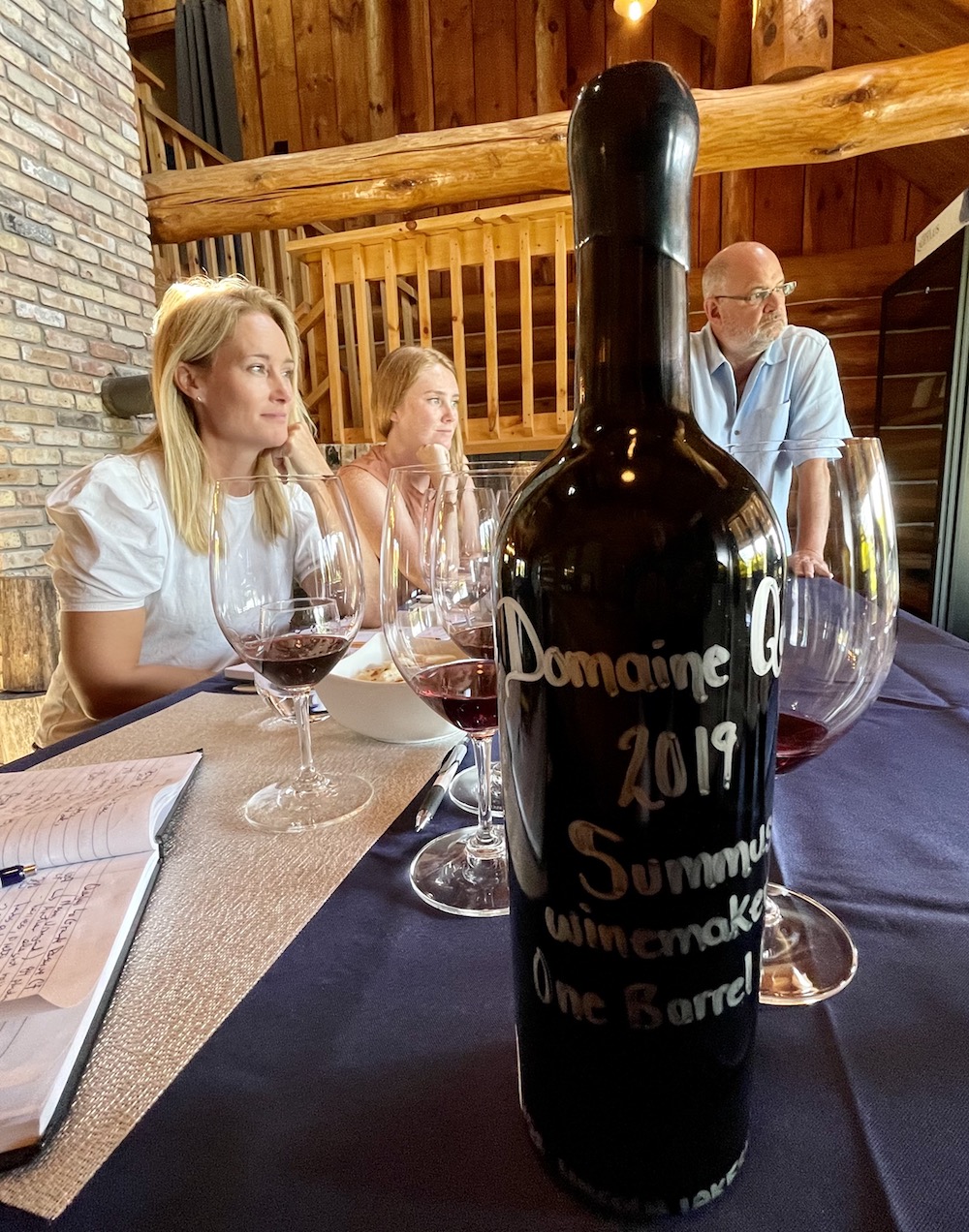
Zoom ahead 12 years, and despite changes in the Quebec partners and, perhaps more impactful, the reins of the winemaking side of the business now turned over to Kelly Mason (above left with assistant winemaker Brooke Husband and GM John Nadeau), Queylus has carved out an important place in Niagara and has no trouble drawing consumers to the beautiful tasting room and patio with food prepared by award-winning Chef JP Challet.
The estate’s reputation for making Pinot Noir, Chardonnay and Bordeaux-variety wines at the highest end of the quality sphere has been firmly established under Bachelder, and Mason has carried that torch into the wines she and assistant winemaker Brooke Husband are now responsible for.
Perhaps one of the most important endorsements for Mason is the full approval and complimentary comments of the senior most partner of Queylus, Champlain Charest, the well known former restaurateur of the famed Bistro à Champlain, in Ste-Marguerite-du-Lac-Masson, in the Quebec Laurentians. He always tells it like it is: “I like it very much. My name is there, I approve of this wine,” Charest tells Mason via a closed circuit TV link at a recent tasting. It’s high praise from the 90-year-old collector of some of the world’s greatest wines, and music to the ears of Mason. The wine he is speaking of is the one wine that bears his name, the Domaine Queylus La Grande Réserve Chardonnay Cuvée Champlain 2019.
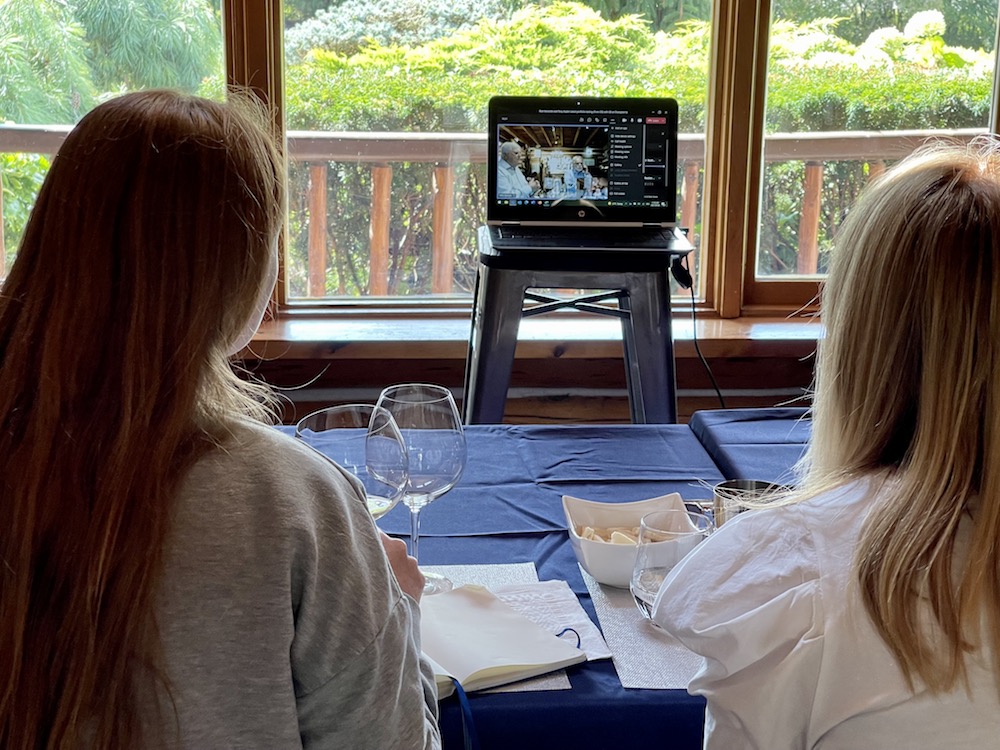
The top estate Chardonnay is one of the benchmark wines being made at Queylus and it’s never a slam dunk that Charest would find favour with every wine produced at the estate. He has an impeccable palate and a taste for the most profound and highly collectible wines in the world and his assessments are always spot on.
It was long a dream of Charest that Domaine Queylus would someday produce a “grand vin” from Chardonnay, one that was complex, yet subtle, rich yet restrained, balanced, long, and age-worthy. The first vintage, the 2018 released a year ago, was also a stunner, but the first bottling Mason was fully responsible for just might best it. It is a beauty.
Tasting on this day with Mason, Husband and estate general manager John Nadeau at the winery, with Charest and another managing director, Gilles Bussière, via video link, is always a little tricky. Video freezes from time to time, there are sound issues, internet struggles, language fails (at least for unilingual me), and questions flying about myriad things from myriad places always complicates what would otherwise by a “normal” tasting. Charest and the team at Queylus prefer to taste in person, but COVID has forced the necessity for long-distance participation the past couple of years.
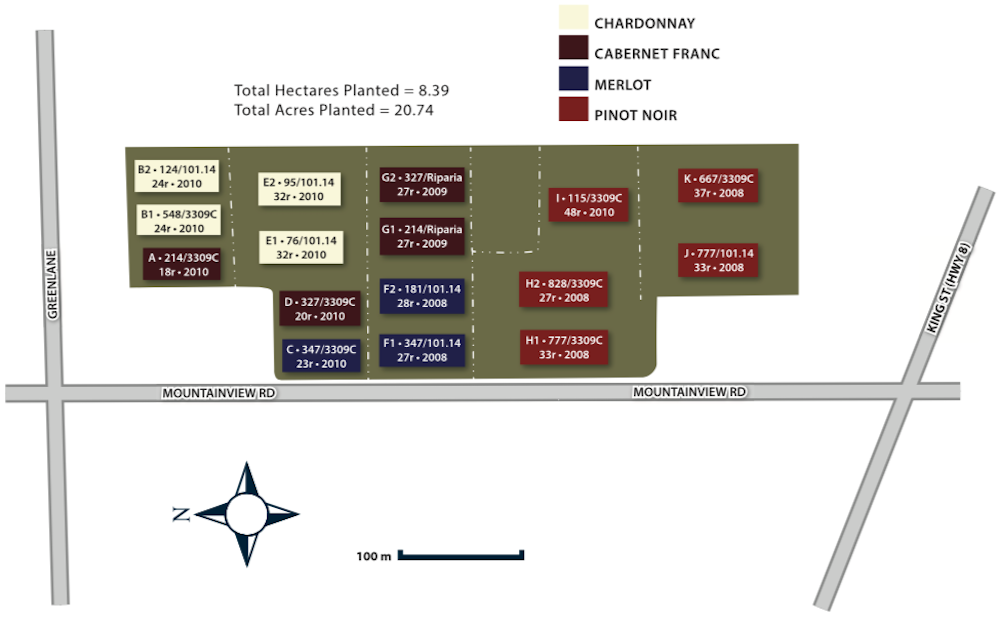
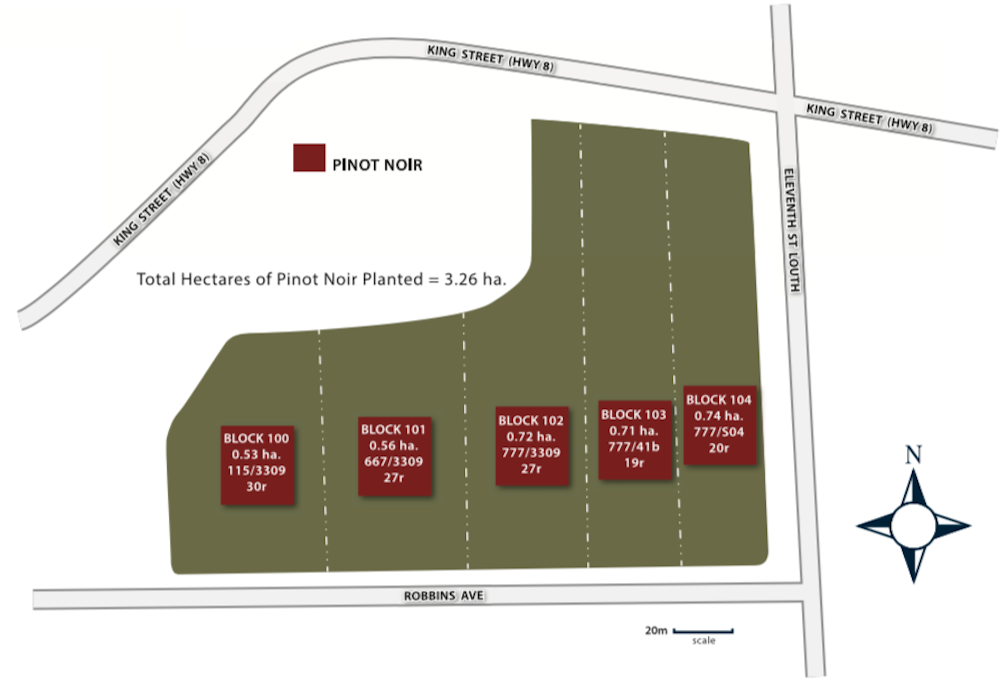
Queylus primarily draws from two key estate vineyards: The Mountainview Vineyard, planted in 2008, is located in the Lincoln Lakeshore sub-appellation. It is 20 acres of Pinot Noir, Chardonnay, Cabernet Franc and Merlot planted on silty-clay, limestone-laced soils, with sand occurring at the northern end of the vineyard. The Jordan Bench Vineyard, planted in 2002, is 9 acres of Pinot Noir located in the Twenty Mile Bench sub-appellation. The soil is clay and silty-loam planted over limestone bedrock.
All the wines at Queylus are wild fermented and aging is in selected French oak barrels for 16 to 20 months. The oak barrels are made by coopers who have been hand-selected over the years for their finesse and commitment to quality. The wood comes uniquely from forests in the northeast of France known for their tight grain and subtlety of perfume: Allier, Jura, Bourgogne, and the Vosges. These barrels (which are made of wood that has been air-dried for three years) are made by the Burgundian cooperages such as Damy, Master Coopers, Cadus, Billon, etc. To ensure that the terroir is at the forefront of the wine, only 20-30% of the barrels used are new.
After bottling, the wines are aged a further 6 months before release to develop perfume and round out the mouth feel.
Here’s what I liked from the tasting.
The Chardonnay
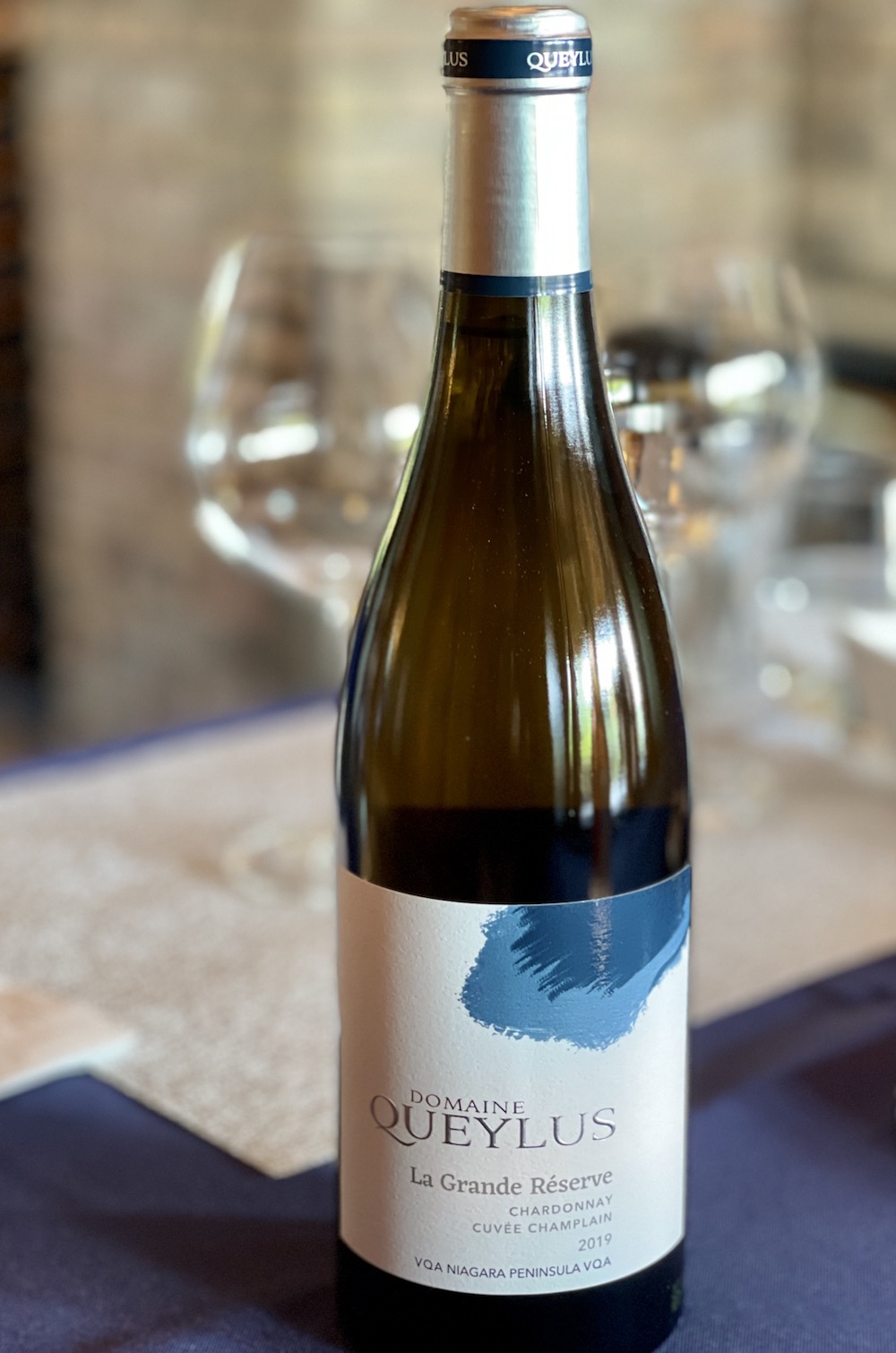
Domaine Queylus La Grande Cuvée Champlain Réserve Chardonnay 2019 ($50, 94 points) — For the assemblage on this signature Chardonnay at the estate, Mason wanted a wine that shows more restraint with less oak and less of those fruity tropical notes. The wine spent 24 months in 100% French oak with only 5% new oak. “I’m looking for balance and good acidity,” Mason tells Charest, the man whose name is on the label, via video hookup. It has a beautifully elegant nose of perfumed pear, flinty/stony minerality, ripe apple, vanilla cream, toasted almonds and underlying spice notes. There is a richness and elegance to this wine on the palate with pear, quince, lemon tart, vanilla toast, wet stones, precision, vibrance and length through a long, lifted and finessed finish. This is a gorgeous Chardonnay that will benefit from 5+ years in the cellar, perhaps more.
The rosé
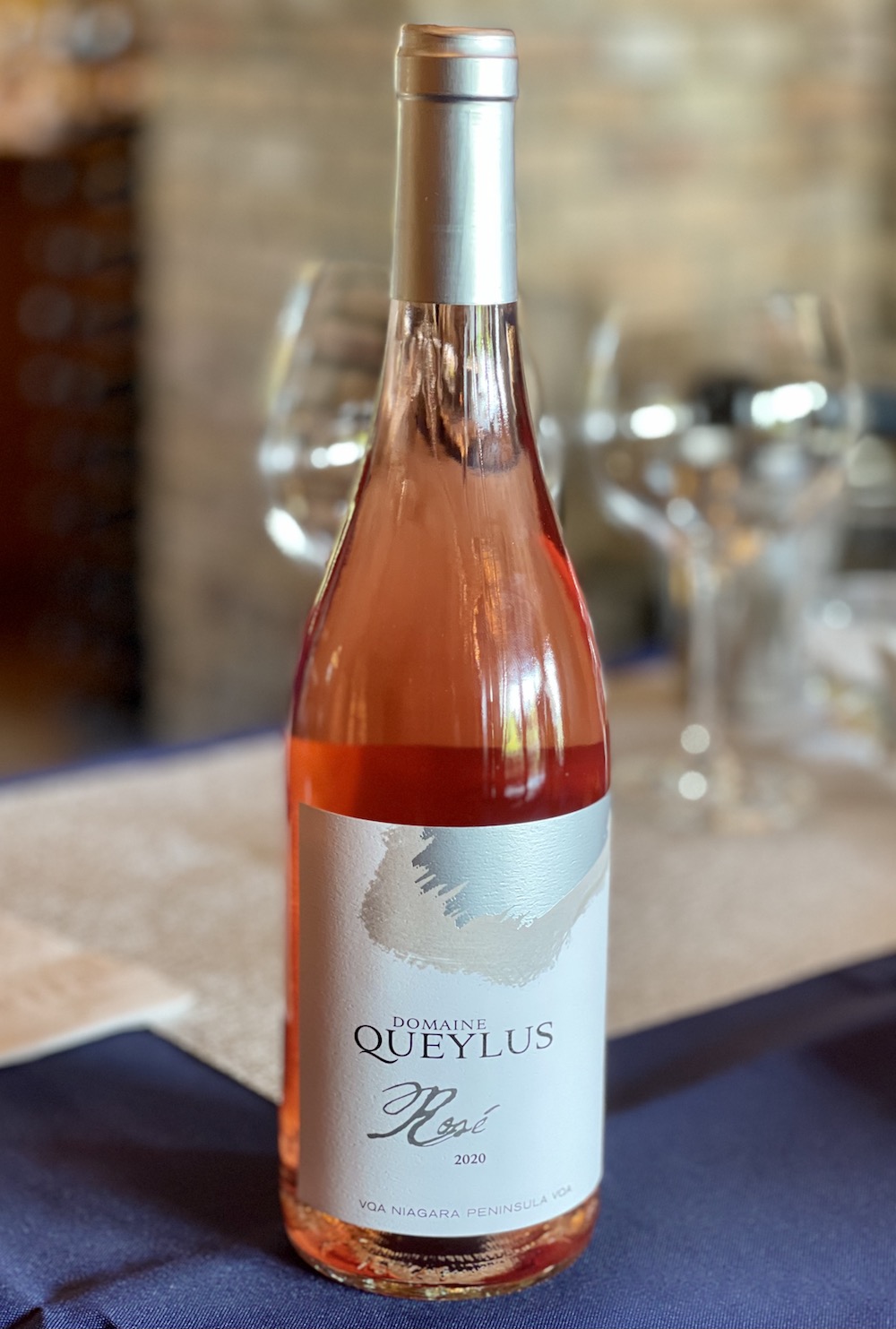
Domaine Queylus Rosé 2020 ($25, 91 points) — This 100% Pinot Noir rosé has a forward and fresh nose of summer strawberries, wild raspberries and subtle cranberries. It’s perfectly dry and elegant on the palate and shows a basket of red berries and a touch of citrus zest on a lifted finish.
The reds
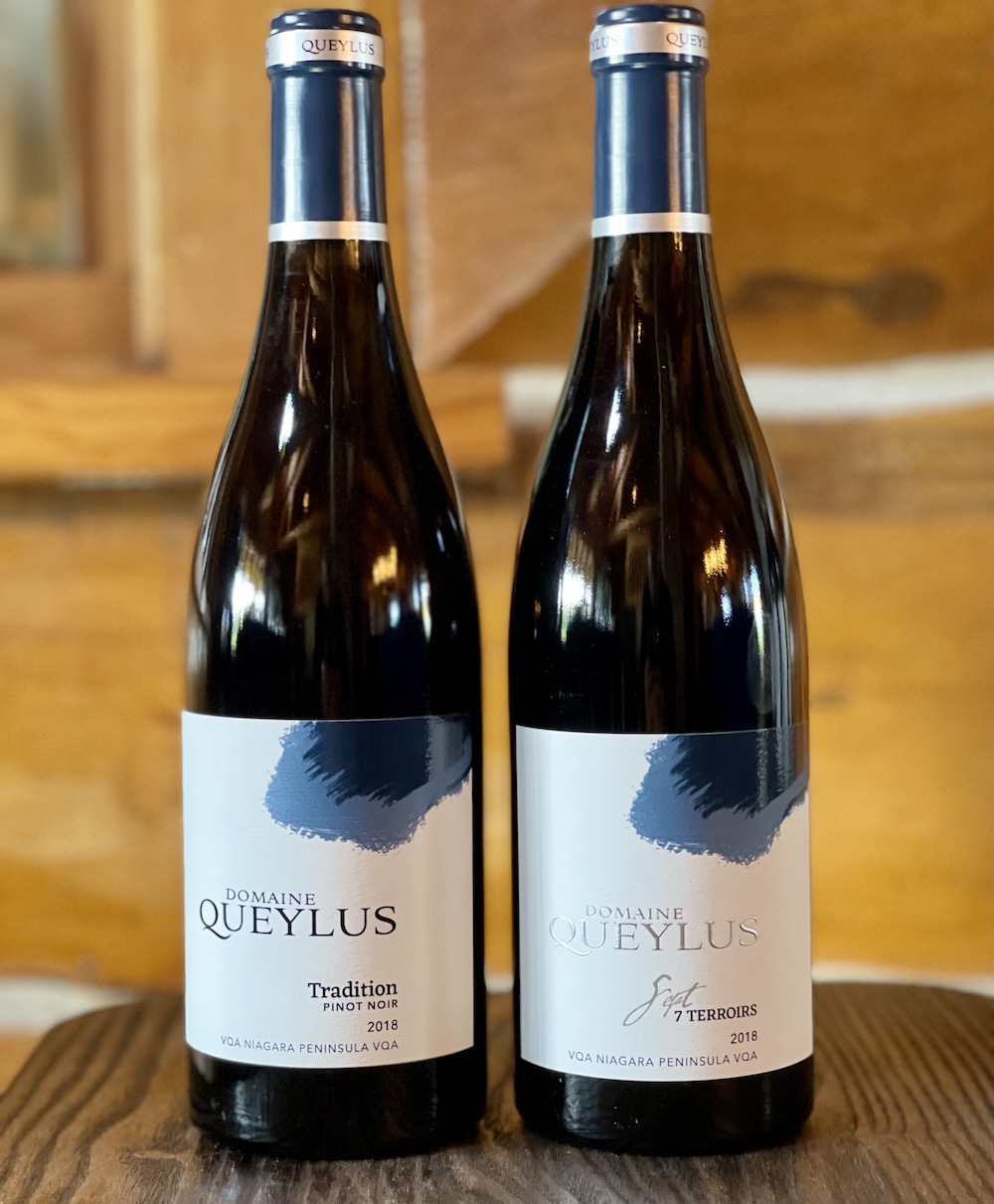
Domaine Queylus Tradition Pinot Noir 2018 ($33, 90 points) — “One of my goals in life,” says Mason, “is to hook people on Pinots.” The Tradition, the junior member in a stellar lineup of Pinots, is a pretty good place to start. Mason is looking for some depth, backbone and structure in this wine, referred to by general manager Nadeau as a “gateway Pinot.” It’s aged in all French oak, 20% of which is new. It has a pretty nose of rose petals, raspberries, some black fruits, perfumed cherries, underbrush and subtle oak spices. The palate reveals savoury red berries, violets, integrated oak, some mushroomy/earthy notes with pretty good length and finesse on the finish. Approachable now, but can cellar a few years.
Domaine Queylus Sept Terroirs 2018 ($75, 91 points) — The very first time I was introduced to this proprietary blend, way back in the beginning of Queylus’s existence in 2010, it was in barrel and was a blend of everything the winery grew or purchased — including red and, yes, white grapes! It was an odd wine, that first effort, but it has evolved over time with first Bachelder as the winemaker and now Mason. “It always surprises me,” she says. “The thought of putting Merlot in Pinot just feels wrong. But it works.” Only two barrels (50 cases) are made of this wine and the seven (sept) terroirs are explained to me this way: Merlot, Cabernet Franc, two Pinot Noir blocks off Mountainview and two Pinot Noir blocks from Jordan, plus a “modest” gesture of Chardonnay, like the measure of Vermouth you’d use in a super dry Martini (wink, wink). It’s aged for 24 months on all French oak, 28% of which is new oak). On the nose you have a basket of red berries, but also savoury/meaty notes, herbs, cassis, sweet oak spices and persistence. It has decent structure and weight on the palate and shows balance between the pretty Pinot notes and the structure and power of the Bordeaux varieties. The fruits range from ripe red berries to more darker fruits of black currants and cassis with subtle herbs, earthy notes and medium+ tannins through a perky finish. A wine that is completely unlike any other.
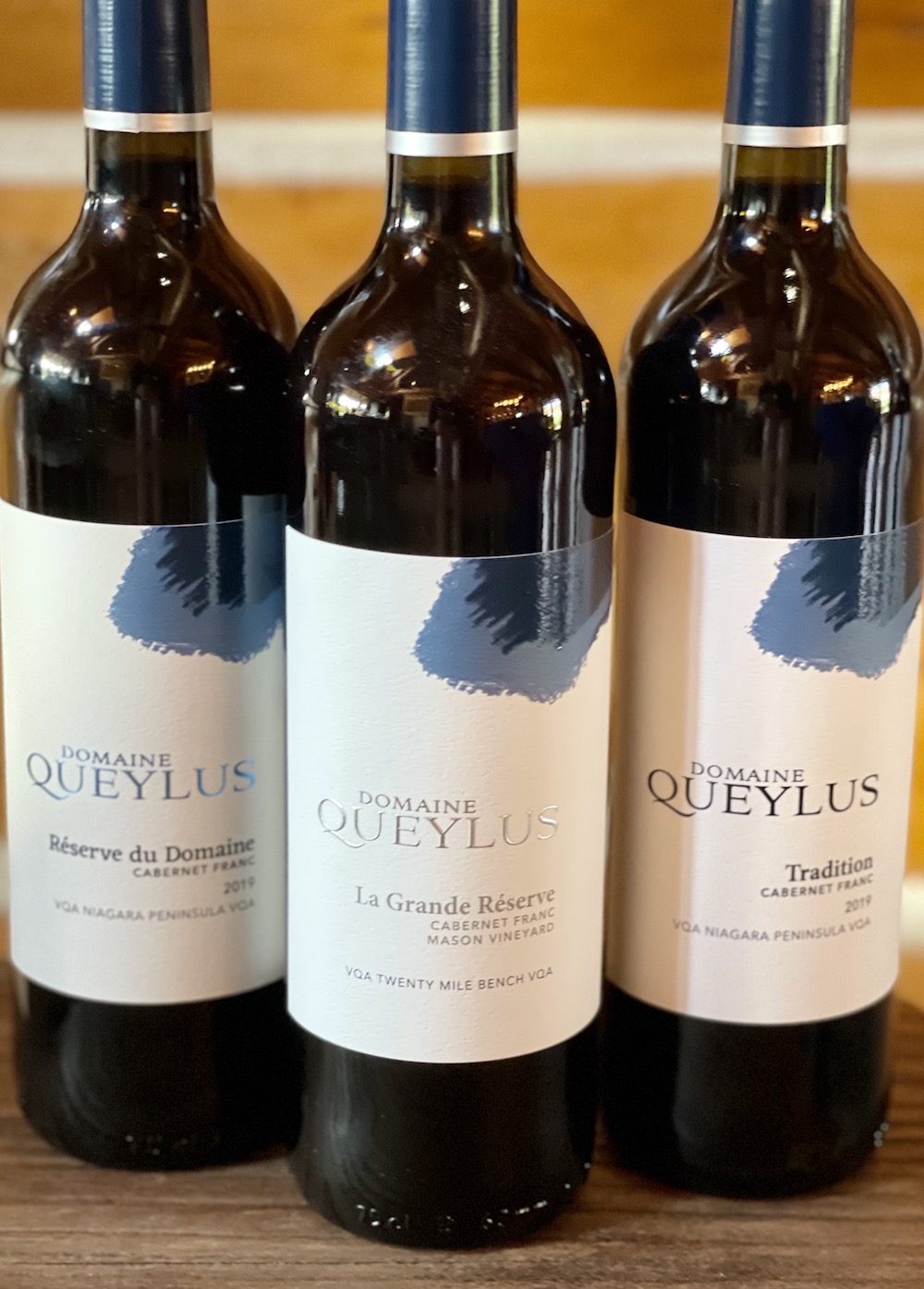
Domaine Queylus Tradition Cabernet Franc 2019 ($30, 90 points) — The “entry” level Cab Franc is aged in 100% French oak, 27% of which is new oak and a tiny bit (7%) of Merlot is blended in. Such a lovely nose wild red berries, garden herbs, integrated spices and subtle savoury notes. It’s quite “silky” on the palate, Charest observes, with a complex array of cherries, raspberries, cranberries, bramble, herbs, roasted red peppers and integrate spices.
Domaine Queylus Réserve du Domaine Cabernet Franc 2019 ($40, 93 points) — Now, this is gorgeous. Mason doubles the Merlot content here to 14% with aging in French oak, 29% of which is new oak. The purity and elegance shows on the nose, then reveals wild raspberries, dark cherries, sage, a touch of anise and perfectly integrated fine oak spices. Such a concentrated — yet balanced— attack of ripe red berries, plums, persistence and ripe tannic structure, length, freshness with a lifted, long finish.
Domaine Queylus La Grande Réserve Cabernet Franc Mason Vineyard 2019 ($50, 94 points) — Travelling up the ladder in Queylus’s tiering system, this Cab Franc is sourced from winemaker Mason’s own vineyard with plantings back to 1984. It’s a 100% Cab Franc with aging in French oak, 28% of which is new oak. Another pretty, elegant CF on the nose with a rich mélange of small red berries, integrated herbs, spice and fresh turned soil. It shows overt wild raspberry bramble, dark cherries, spice, herbs with persistence, ripe tannic structure and verve through a polished finish. Such grace and elegance with aging potential of 7+ years.
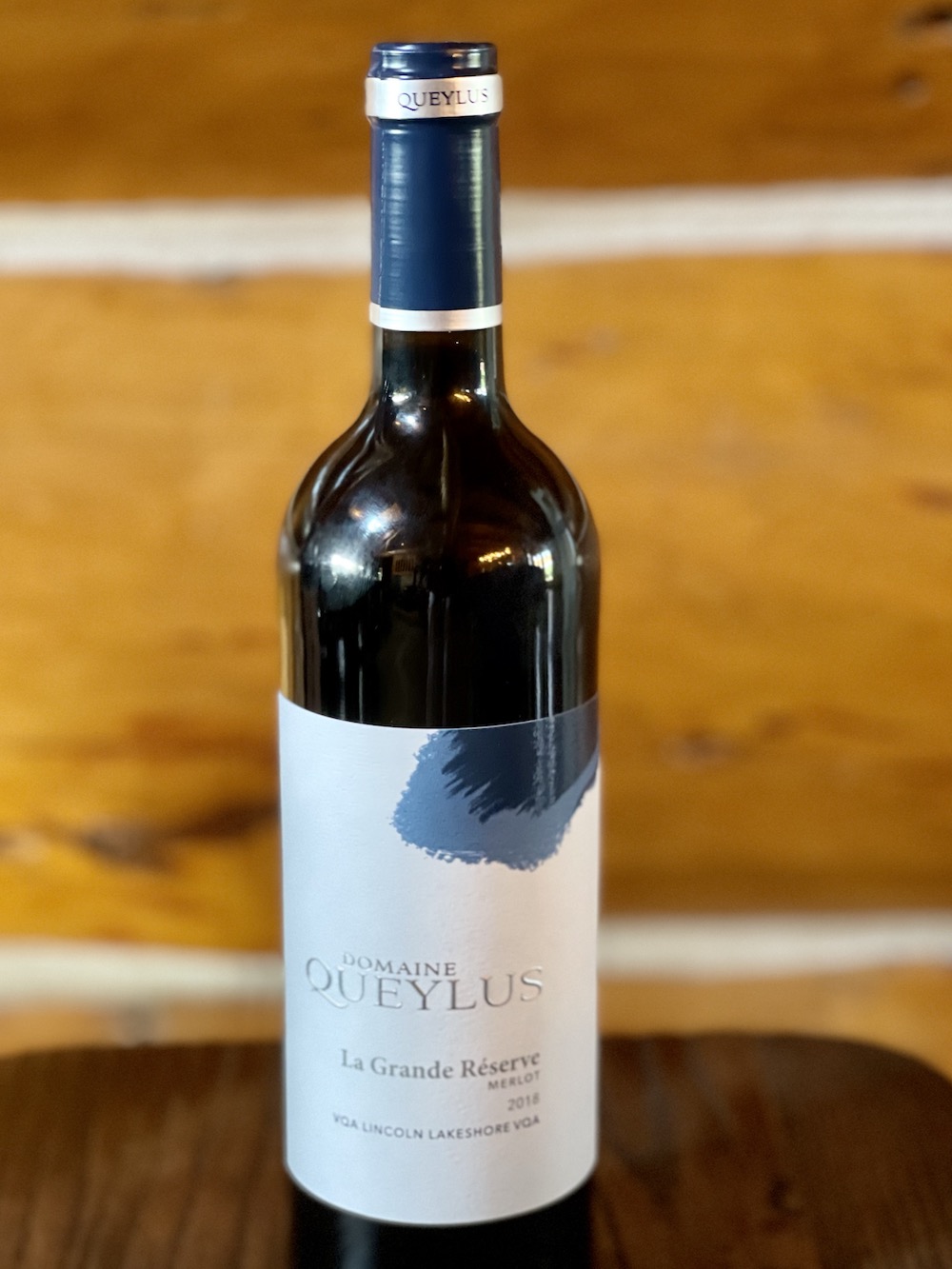
Domaine Queylus La Grande Réserve Merlot 2018 ($50, 93 points) — The Grande Réserve Merlot is from the estate’s Mountainview Vineyard with 14% Cabernet Franc added to bring structure and backbone. This has a beautiful, elegant nose of cassis, black cherries, currants, a lifted floral note and fully integrated oak spice. It’s pretty on the palate, yet structured, with fine-grained tannins, cassis, a touch of anise, ripe dark cherries, lovely spices and length through a finessed finish. Can cellar 7+ years.
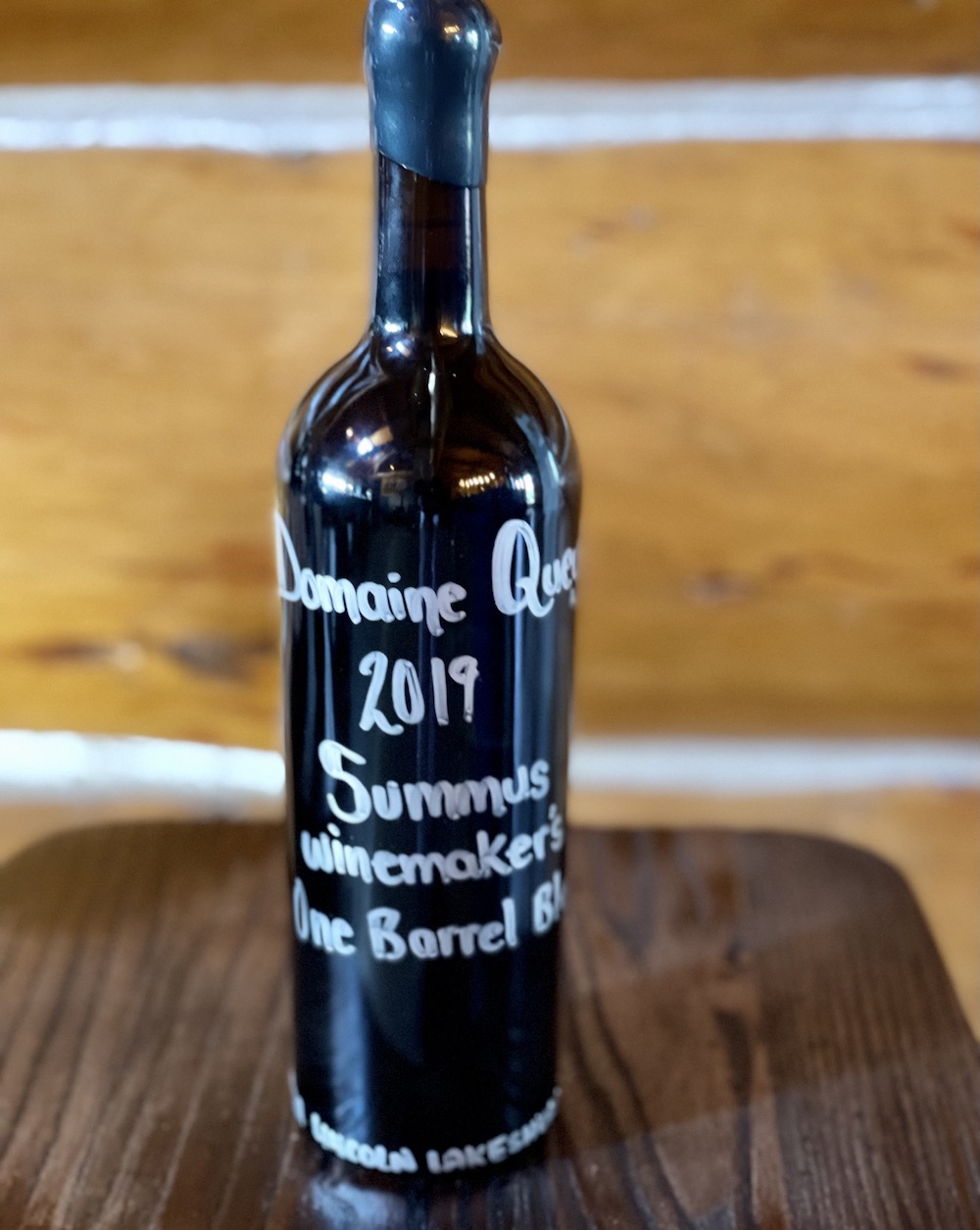
Domaine Queylus Summus 2019 ($95, 94 points) — This is the culmination of the best that Queylus does on the Bordeaux variety side of the portfolio. It’s a one-barrel blend of the estate’s best Merlot and Cabernet Franc, a 50-50 blend with no new oak used, only second and third-fill barrels. The nose is tight, but opens up with swirling to a savoury nose of ripe red cherries, cassis, wild raspberries, cassis, black currants, elegant and integrated spices with subtle earthy/meaty notes. It is such a beautiful wine on the palate, finessed yet ripe with persistent/dense red and dark fruits, hinting at herbs, complementary spice notes with fine-grained tannins that all lead to a finessed finish that lasts for minutes. A beautiful wine that has a lots of room to grow. Cellar for 10+ years and see what a great red from Niagara can do. Bravo!


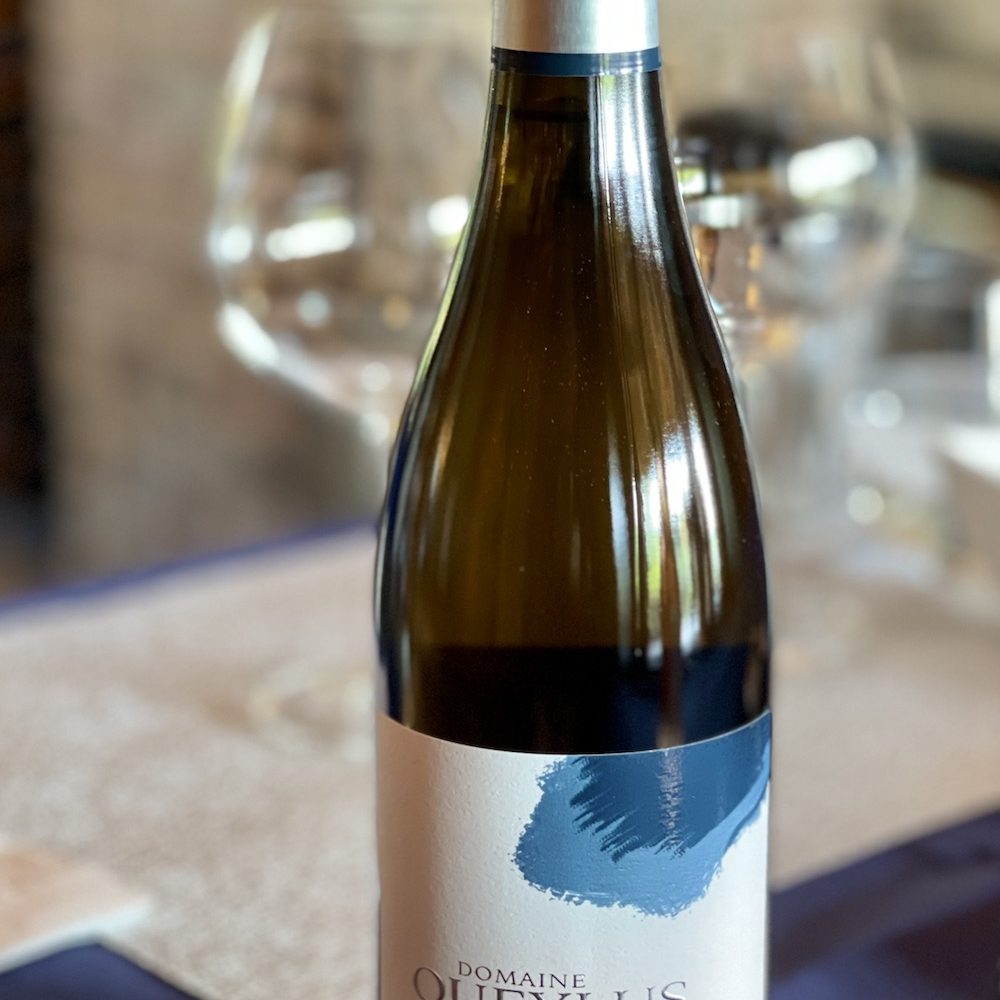



Comment here